home
Home
>
Eroded Teeth Replaced with All-Ceramic Dental Implant Bridges
Eroded Teeth Replaced with All-Ceramic Dental Implant Bridges
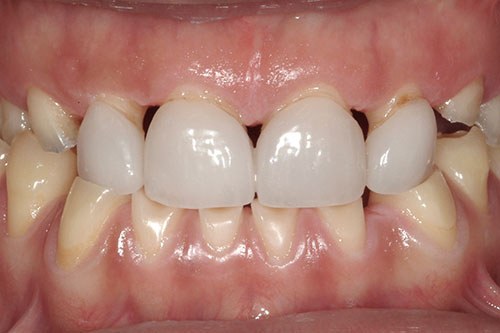
BEFORE
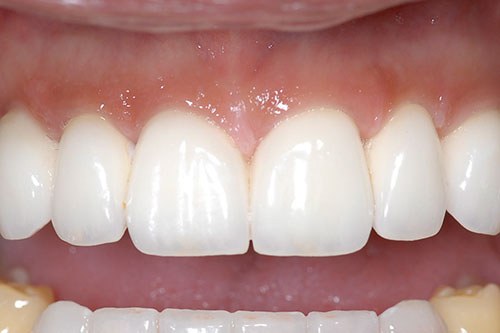
AFTER
Bulimia is a condition that is associated with regular vomiting that often results in severe erosion of the teeth over time. Apart from destroying tooth structure from the inside of the mouth, the erosion causes hypersensitivity of the teeth. Gradually the dissolution of tooth substance extends to the pulps of the teeth, can be quite painful and debilitating, which was how this young lady presented at our clinic.
In the Before picture, the front teeth appear to be whole, but this is because the upper front teeth had porcelain veneers. The ceramic material is not affected by the erosion, but the entire substance of the natural teeth beneath the veneers had dissolved away, as can be seen in the first sequence picture.
It was not possible to save most of the upper teeth in this case because there was not sufficient tooth structure remaining to do anything. The teeth had to be removed as all the pills were exposed causing severe pain.
As a young woman, this patient wanted to avoid dentures. We considered two options with dental implants:
Option 1 – Full upper replacement with an All-On-4 style implant bridge, with Aesthetic Gum Replacement, where the gums are replaced as part of the bridge
Option 2 – Preserve the natural gums and tooth sockets and replace the teeth in bridged segments.
Usually, with the second option, there is always a risk of recession which can cause gum asymmetry and poor aesthetics. However in this case, whilst the teeth were completely deteriorated, the gums were healthy and of a stable kind. As such, we decided to proceed with the implant bridge option and undertook the following course of treatment:
Step 1 – we removed the eroded teeth and placed dental implants in the same spot at the same time. It is not ideal to place implants in close vicinity to each other as this may cause collective bone loss around the implants during healing, so we placed the fixtures in alternate sockets as can be seen in the second sequence picture. The sockets that did not receive implants had to be preserved with bone grafting in order to maintain the tissue volume that was required to prevent recession and poor aesthetics.
Step 2 – we connected an immediate provisional bridge to the fixtures to allow the gums time to heal and mature
Step 3 – after 3 months of healing, we made zirconia-porcelain bridges that were individualised by our laboratory technician, as seen in the 5th sequence picture.
The end product: segmental ceramic bridges nestled within the natural gums and supported by dental implants, all performed by our Melbourne team, with the surgery undertaken by Dr Alex Fibishenko and porcelain work by our on-site dental laboratory.
Treatment Process

Severe erosion of the upper teeth. Note the porcelain veneers in the front are in tact but the underlying teeth are dissolved down to the pulp.
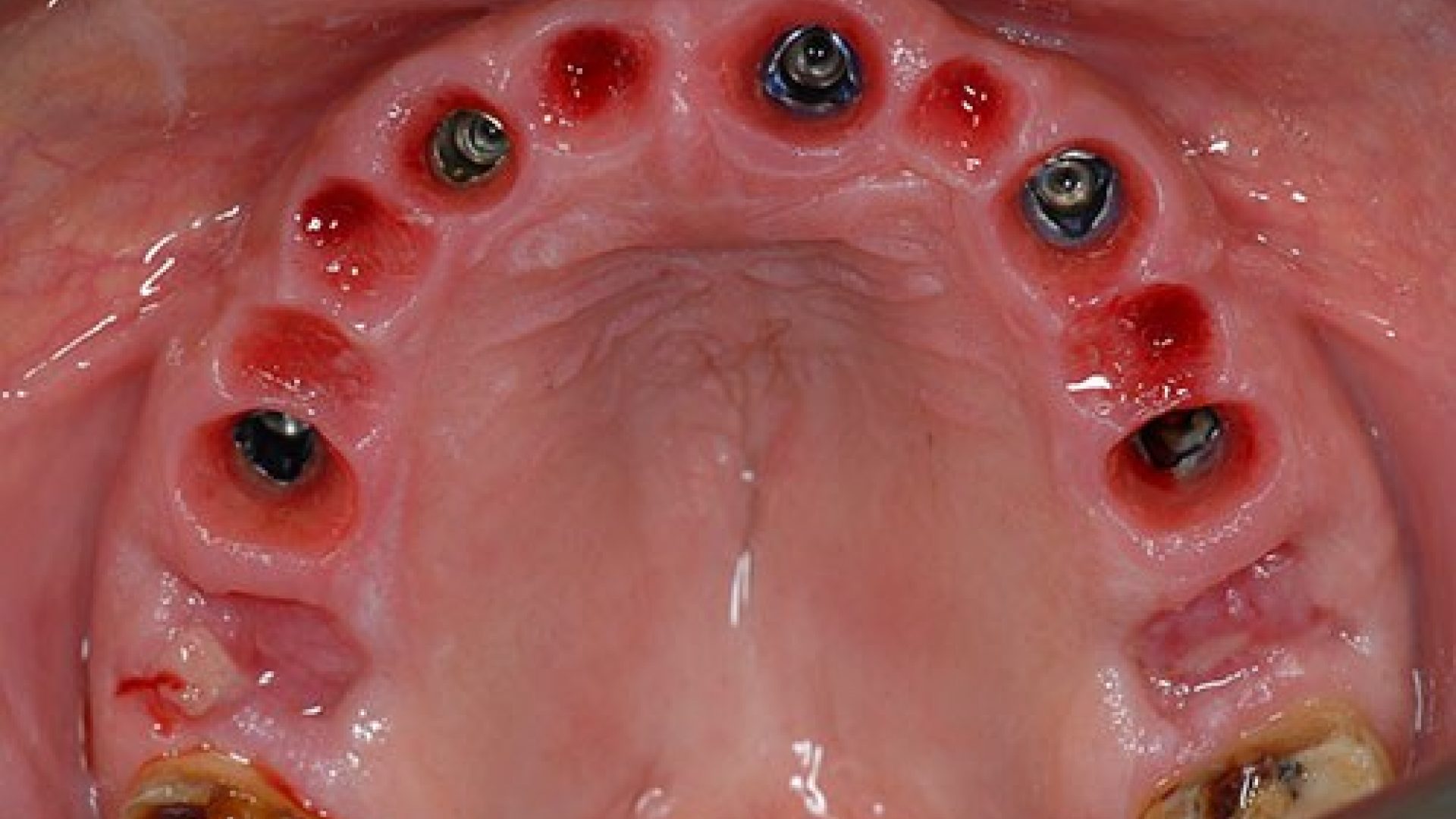
After removal of the teeth, dental implants were placed in alternate socks, and the other sockets were preserved with bone grafting at the time of the surgery.

The bridges in place over the fixtures.

After 3 months of healing, the gums have matured and stabilised allowing the construction of the final ceramic bridges.

The porcelain teeth are completely individualised to achieve the most natural shape, shade and light reflection.

Final porcelain bridges fitted to the dental implants that support them.
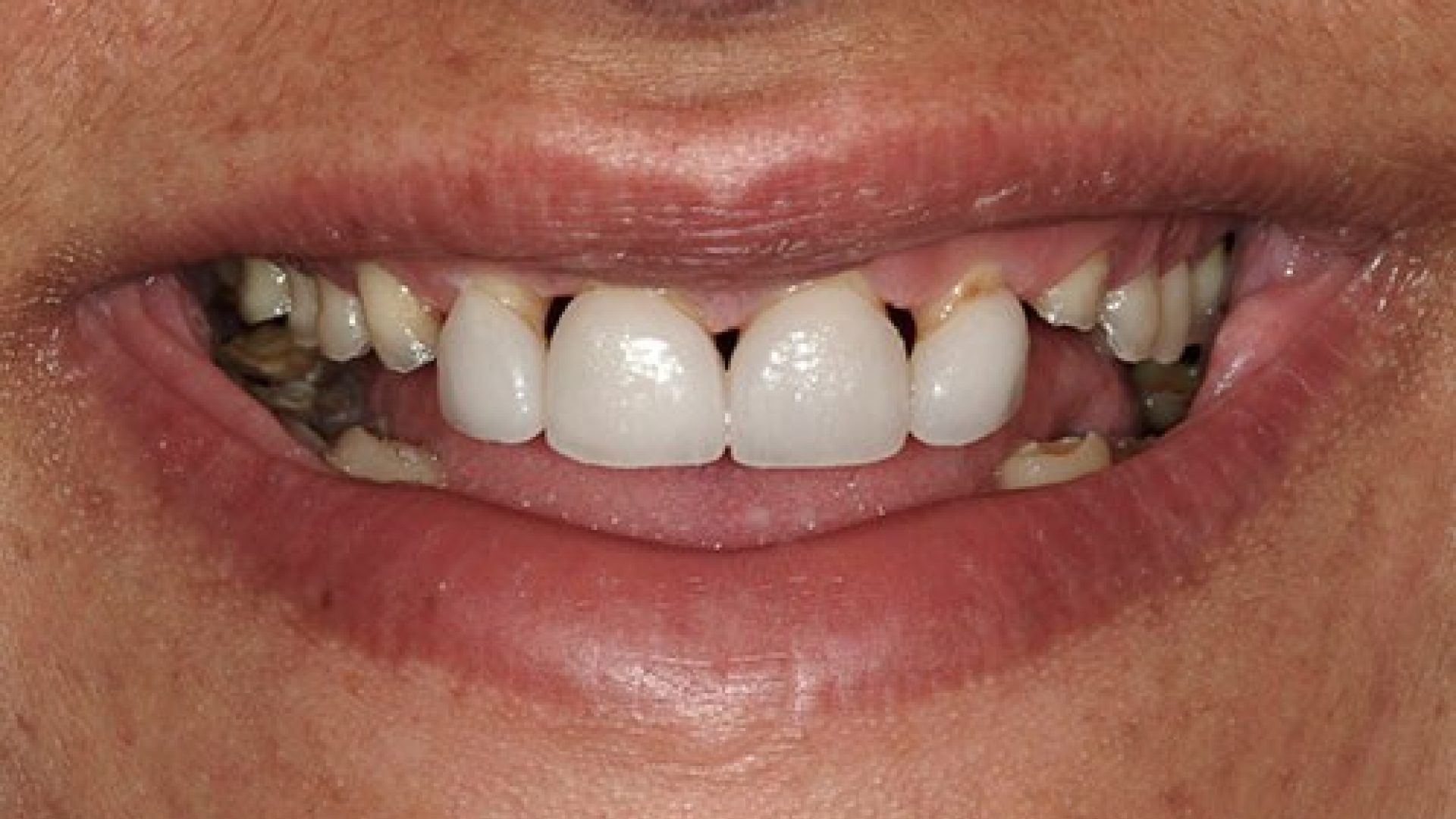
Where we started with the severely eroded teeth, partly masked by the presence of porcelain veneers on the front 4 teeth.

The result after treatment by the team at Centre for Aesthetic & Implant Dentistry.
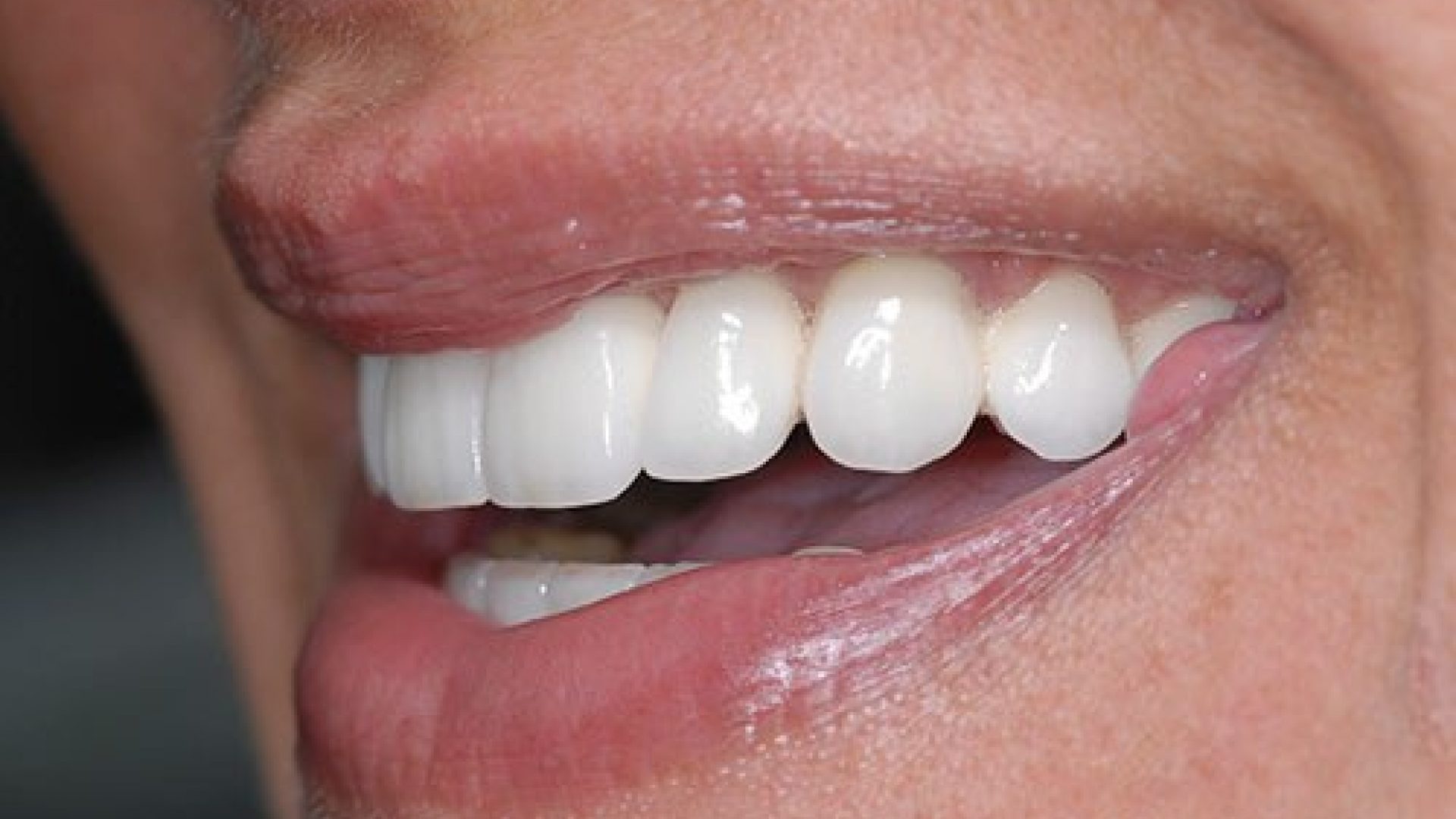
The result after treatment by the team at Centre for Aesthetic & Implant Dentistry.
keyboard_arrow_left
Back to Before & Afters



